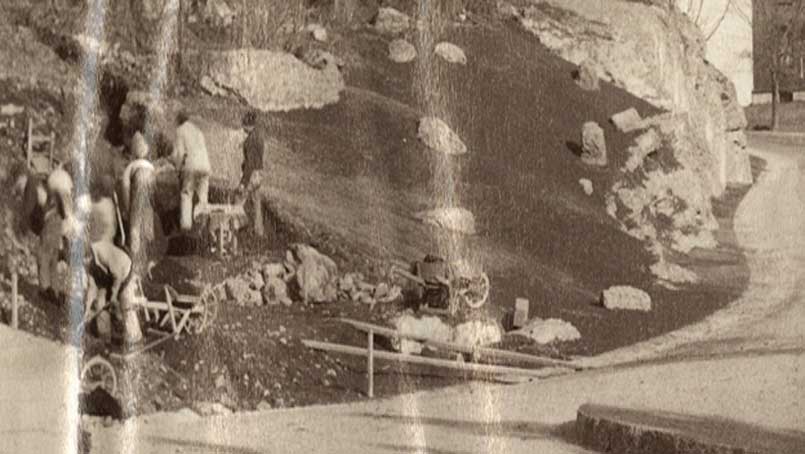
11 Feb Hidden Beneath: Rediscovering Olmsted’s Early Construction in Franklin Park
Our guest blogger, Boston Parks and Recreation Department’s Director of Historic Parks, Margaret Dyson, shows us how a project in Frederick Law Olmsted’s historic Franklin Park uncovers the landscape architect’s original designs for water management and restores their use.
While it is not the most whimsical or magical example, we at the Boston Parks and Recreation Department have been having fun with a “hidden beneath” project at Franklin Park.
The old carriage roads through Franklin Park were built in the 1890s and had been open to general traffic until about the 1980s. While the main connector through the park remains open, the balance of the carriage roads have been closed to through traffic. These generously scaled ways are well used and well loved by park visitors, but were in very poor condition. The paths needed resurfacing. Could this be an opportunity to rehabilitate historic elements too?
It was not clear when the ways had last been paved, and the surface was failing. About 2-3 feet on either side of the pavement was in particularly tough shape. We could see some cobbles peaking out here and there.

We knew from historic pictures that in the Olmsted period the ways were bordered by cobble gutters. (see 1890 Franklin Park construction photo from the Olmsted Archives)

In the earliest years of the 20th century carriageways had been given over to the novelty of cars. The dust kicked up by this newfangled contraption had led to early paving of many park roads. As the use of cars on park roads expanded, so did the ways themselves. The pavement covered over historic features like the original cobble gutters. While the overall structure of these systems remained, the delicacy and precision of the design were lost to sloppy pavement and mushy edges.
We didn’t know what we would find – if the cobble was still there or if it would be salvageable. With the support of Stantec for one phase and Kyle Zick Landscape Architecture for another, we developed plans and specs to rehabilitate the paths. Lorusso Corp won the jobs for both phases, and in path after path we discovered the cobbles hidden beneath. In most places it had been remarkably well preserved.
With the careful work of the team from Lorusso, Olmsted’s original lines and geometry have been revealed.



